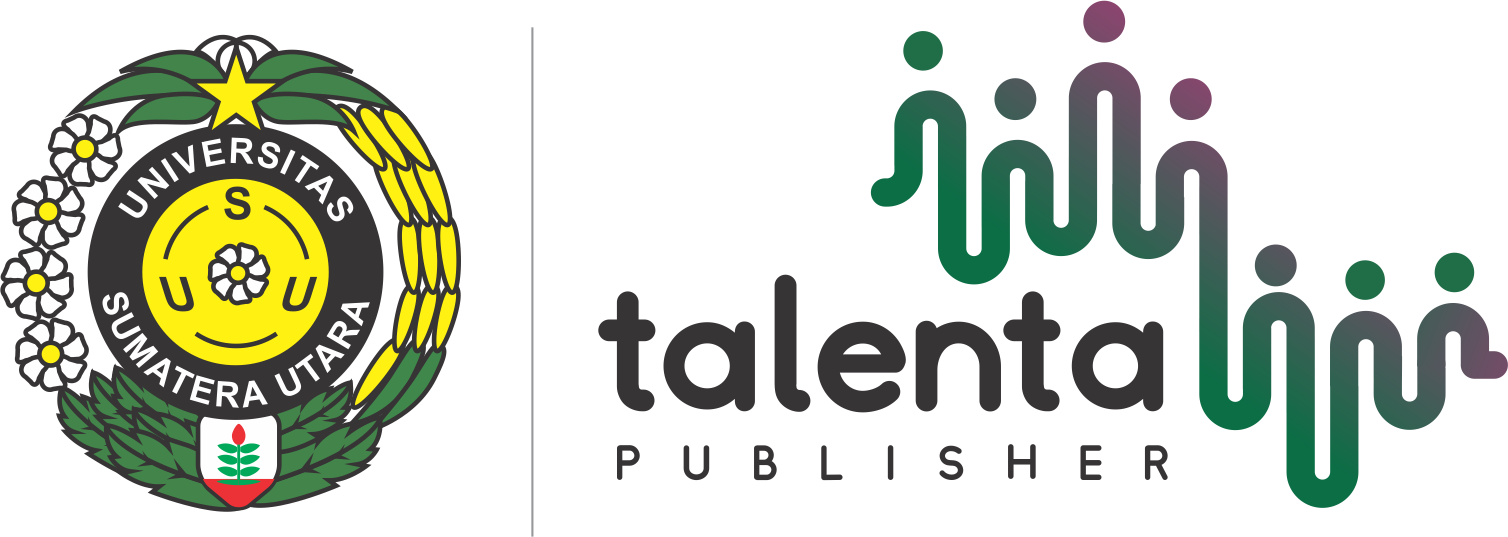Aplikasi Sistim Informasi Geografis Dan Penginderaan Jarak Jauh Dalam Model Spasial Tingkat Kerawanan Konversi Lahan Hutan Di Daerah Aliran Sungai (Das) Deli
The Application of Geographic Information Systems and Remote Sensing in the Spatial Model of the Level of vulnerability of Forest Land Conversion in Watersheds (DAS) Deli
| Authors | ||
| Issue | Vol 1 No 1 (2018): Talenta Conference Series: Agricultural and Natural Resources (ANR) | |
| Section | Articles | |
| Galley | ||
| DOI: | https://doi.org/10.32734/anr.v1i1.130 | |
| Keywords: | kerawanan konversi lahan hutan model spasial DAS Deli | |
| Published | 2018-10-16 |
Abstract
Informasi berupa sebaran spasial tingkat kerawanan konversi lahan hutan di DAS Deli sangat penting untuk diketahui khususnya untuk kepentingan mitigasi konversi hutan dalam skala DAS. Penelitian ini bertujuan untuk memetakan sebaran spasial tingkat kerawanan konversi lahan hutan di DAS Deli dengan memanfaatkan teknologi Sistim Informasi Geografis (SIG) dan Penginderaan Jarak Jauh (PJJ). Metodologi pemodelan spasial yang digunakan dalam penelitian ini dengan cara melakukan pembobotan dan skoring pada faktor-faktor pemicu konversi lahan hutan yakni faktor jarak dari jalan, jarak dari sungai, jarak dari pemukiman, slope, kelas ketinggian, kepadatan penduduk, tingkat pendapatan serta nilai land rent. Hasil penelitian menunjukan tingkat kerawanan tinggi seluas 662,13 Ha (11,42%), tingkat kerawanan sedang seluas 3.778,75 Ha (66,56%) serta tingkat kerawanan rendah seluas 1.280,64 Ha (22,02%). Daerah-daerah dengan tingkat aksesibilitas tinggi merupakan daerah prioritas dalam mitigasi konversi lahan hutan di DAS Deli, hal ini dikarenakan daerah-daerah tersebut merupakan daerah yang mempunyai tingkat kerawanan konversi lahan hutan yang tinggi.
Information in the form of spatial distribution of the level of vulnerability of forest land conversion in the Deli watershed is very important to know the interest of mitigating forest conversion on a watershed scale. This study aims to map the spatial distribution of vulnerability levels in a conversion of forest land in the Deli River Basin by utilizing Geographic Information System (GIS) and Remote Sensing (PJJ) technology. The spatial modeling methodology used in this study by weighting and scoring the factors that trigger forest land conversion, namely the distance from the road, distance from the river, distance from a settlement, slope, altitude class, population density, income level, and land rent value. The results showed a high level of vulnerability covering an area of 662.13 Ha (11.42%), medium vulnerability level of 3,778.75 Ha (66.56%) and a low vulnerability level of 1,280.64 Ha (22.02%). Areas with high levels of accessibility are priority areas in mitigating forest land conversion in the Deli watershed, this is because these areas have a high level of vulnerability to a conversion of forest land.






